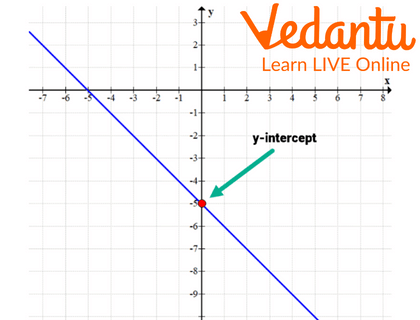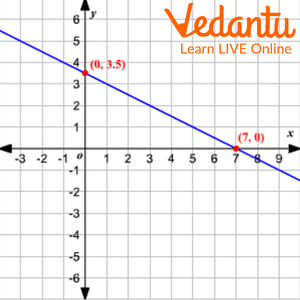




What is the Intercept of a Line?
The x-intercept and the y-intercept are the two different types of intercepts. The line's actual point of intersection with the x-axis is known as the x-intercept, while its actual point of intersection with the y-axis is known as the y-intercept. In this article, we will define the intercept, show how to obtain the intercept for a given line, and demonstrate how to graph intercepts.
What is x-Intercept?
The general form of the linear equation is written as

X-Intercept
What is y- Intercept?
The graph's intersection with the y-axis is known as the y-intercept. Finding the intercepts for any function with the formula

Y-Intercept
Equation of a Line with Intercepts
How to find an intercept of a straight line? Intercepts are subject to various equations and formulas. By solving for x and putting
Following are the steps to determine the y intercept of a function, where
Resolve for y.
Put the y-point intercepts in place (0, y).

Intercepts
Conclusion
The two different kinds of intercepts are the x-intercept and the y-intercept. The x-intercept of a line is its actual point of intersection with the x-axis, and the y-intercept is its true point of intersection with the y-axis.
Solved Examples
Example 1:Find the value of "a" if the y-intercept of a function
Ans: The given function's equation is:
By adding
The y-intercept is therefore
However, the issue claims that the provided function's y-intercept is
Using -6 to divide both sides,
Example 2: Find the x and y intercept in the given graph.

Ans: The x-intercept is 7 and y – intercept is 3.5 in the given graph.
Example 3: Find the x-intercept of
Ans: For finding the x – intercept we must put y coordinate as 0.
Thus, putting
Therefore, x coordinate is 2.
FAQs on Intercepts of a Line
1. What are the Y Intercept Formula Applications?
To determine a function's y-intercept, use the y-intercept formula. The procedure of graphing a function is when the y-intercept is most frequently employed.
2. Is 0 a possible x-Intercept?
For the line
3. What shape does the value angle between the line's Y and X intercepts take if they are equal?
When a line's x-intercept and y-intercept are equal, the line intersects the x-axis at a 45° angle if we are taking in first quadrant.
4. How many intercepts are permitted on a line?
X-intercept and Y-intercept are the two main intercepts. The line's x-intercept and y-intercept are located where the line crosses the x and y axes, respectively.











